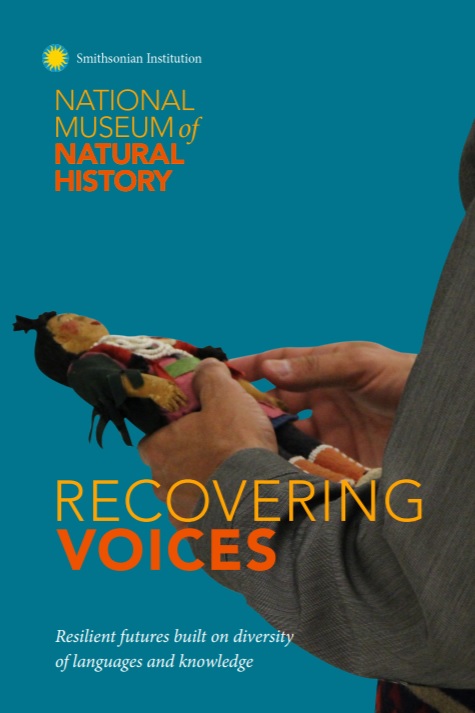
By Haley Bryant
GRASAC has been invited to partner with the Recovering Voices Initiative at the Smithsonian Institution’s National Museum of Natural History in the pilot phase of a new, virtual and intergenerational knowledge sharing program, “Recovering Voices at Home.” GRASAC members share Recovering Voices’ desire to learn effective ways of using technologies to support cultural recuperation and learning through cultural belongings. Recovering Voices invites expressions of interest from our network by October 2nd, 2020. Recovering Voices has committed to funding one (1) community coordinator who will serve as the point person and liaison between Recovering Voices staff, GRASAC coordinators, and community participants. Therefore, at this time Recovering Voices has capacity to invite one (1) community to participate in this pilot phase. The selection will be made based on availability of relevant collections of belongings housed at the Smithsonian and the capacity of interested communities to commit to this ongoing virtual program. High speed internet or specialized technology are not required for this program.
Information on the Program:
Prior to 2020, Recovering Voices’ “Community Research Program” (CRP) funded groups of community researchers from around the world to travel to the Smithsonian to examine belongings, specimens, and documents related to their heritage, and to engage in a dialogue with Smithsonian staff. “Recovering Voices at Home” is designed to virtually continue the work of
the CRP, which has been put on hold due to COVID-related travel restrictions. Recovering Voices has developed new digital programming that seeks to connect community members with their ancestral belongings at the Smithsonian remotely. Recovering Voices at Home will allow the Smithsonian to continue to serve communities during the pandemic and beyond by broadening the accessibility of their programs and testing a new approach to knowledge-building around museum collections.
Recovering Voices At Home aims to empower youth in communities to learn about their ancestral belongings at the Smithsonian through intergenerational discussion. The goal of this process is to encourage learning about one’s own history and culture while building new relationships within the community and developing new skills. Here’s how it works:
- Community liaisons help pair youth participants with a local elder or knowledge holder.
- Recovering Voices staff help identify ancestral belongings at the Smithsonian and share reports of what exists and what is available digitally.
- Community liaisons, supported by Recovering Voices staff and GRASAC coordinators Haley Bryant and Cara Krmpotich, work to identify knowledge-building priorities in community that can be strengthened by bringing together cultural belongings, youth and knowledge holders.
- These themes and selections will be developed into weekly assignments that encourage youth participants to learn through the collections and through discussion with a local knowledge holder, and to share this learning through follow-up reflective and/or creative activity.
- Recovering Voices will provide the funding, logistical support, and help connect you with your ancestral belongings at the Smithsonian.
- Communities lead the conversation and have final say on setting priorities and choosing themes, with no obligation to share the outcomes of this process with the Smithsonian or GRASAC.
GRASAC is committed to supporting this work by providing technical and logistical support. We are able to provide technical resources to help you and your community digitally capture the work you are doing in whatever way may be most useful to you. This includes furnishing you with necessary hardware and software and hosting the content you produce on the GKS or our public website, though use of these resources is not a requirement for participation in the project and can be discussed on a case-by-case basis at any point. GRASAC and Recovering Voices at Home will also support communities in evaluating the strengths, weaknesses, and potential of
this approach for cultural recuperation and recovery.
Please reach out to Haley Bryant (haley.bryant@mail.utoronto.ca) with an expression of interest or any questions by Friday, October 2nd. In your response please include a brief description about why this program appeals to you and your community, and if known, what kinds of cultural belongings are of greatest interest.
